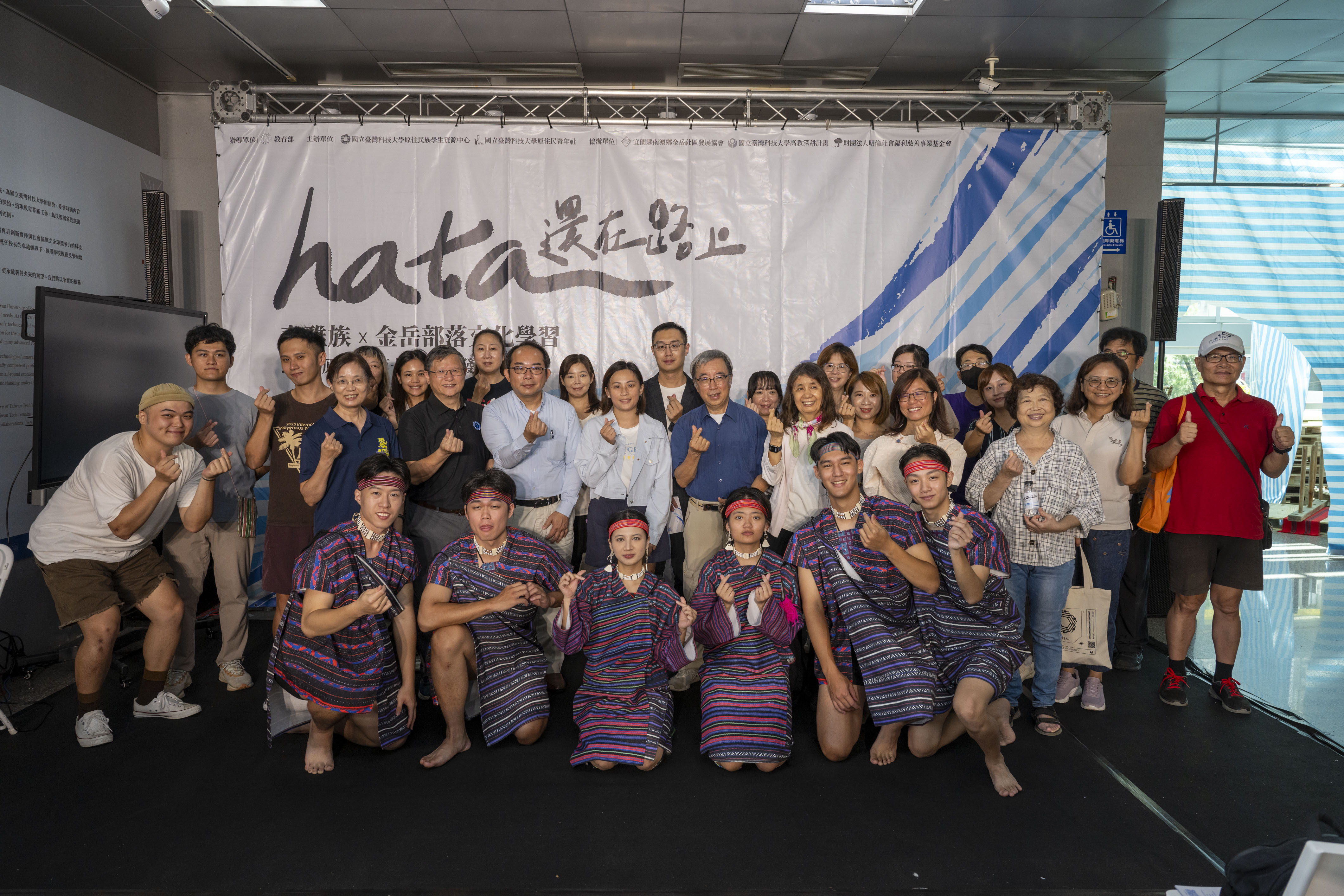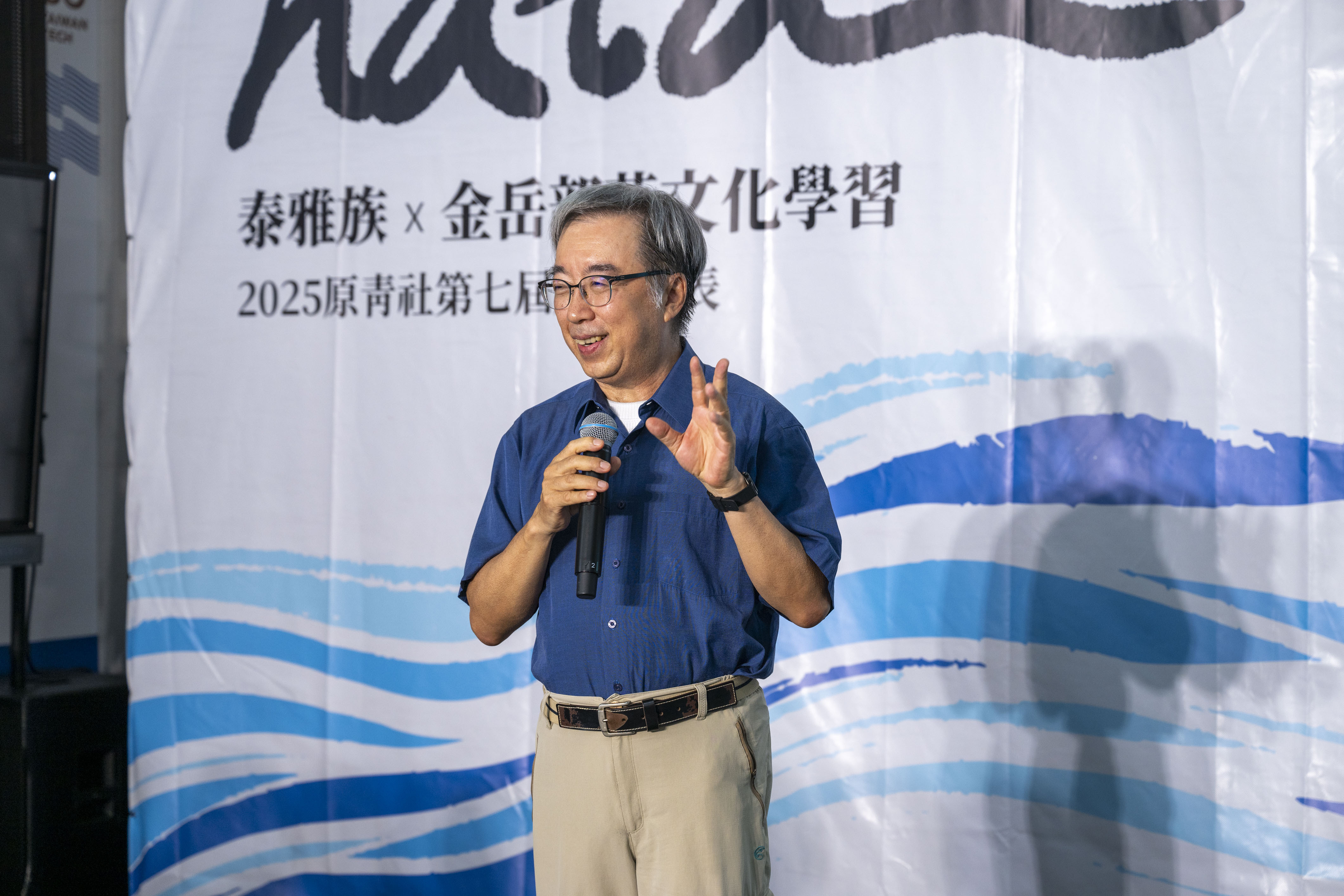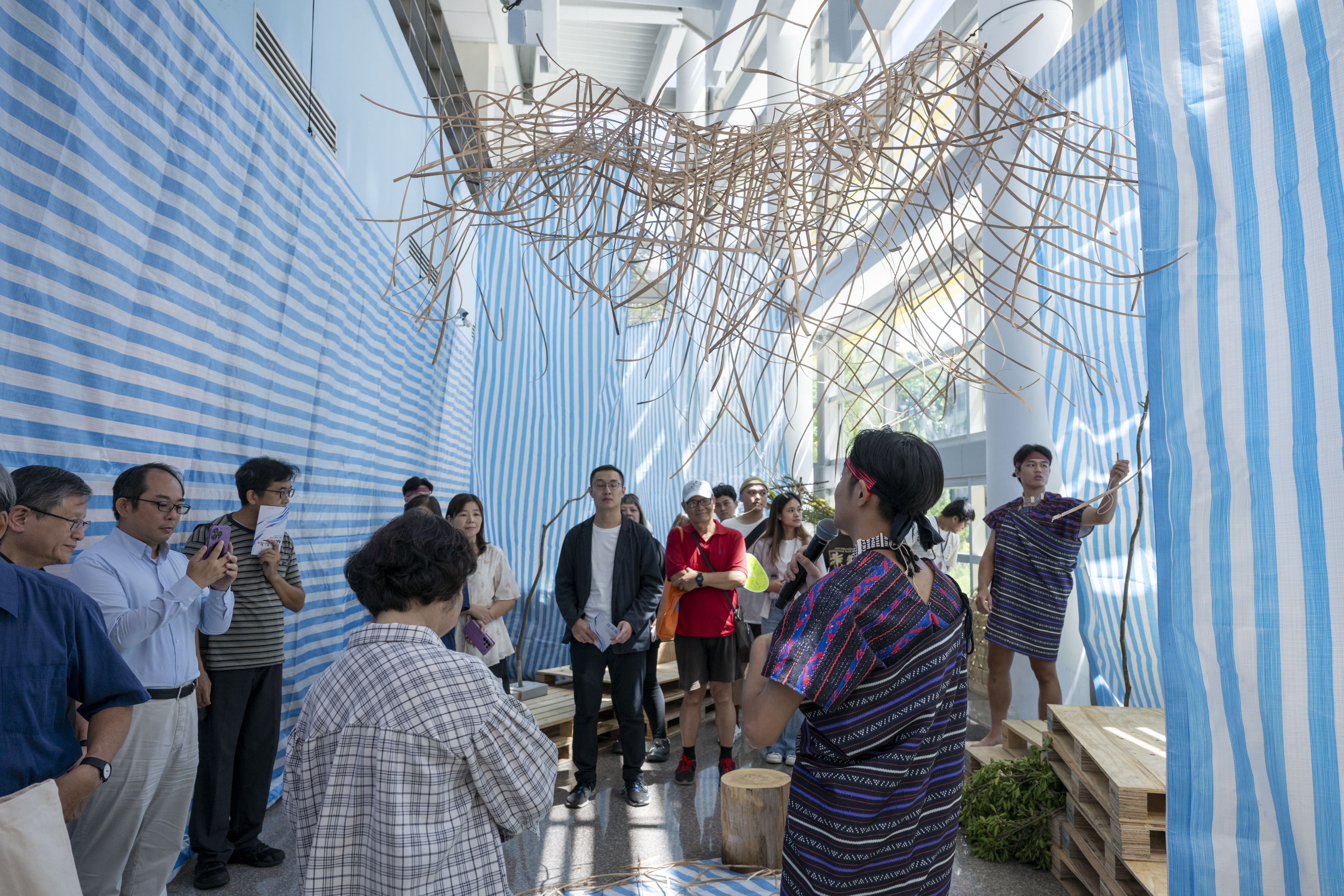Taiwan Tech’s “Hata: still on the road” brings innovation to Atayal indigenous villages.
The Indigenous Student Resource Center at Taiwan Tech organized the annual exhibition series “hata | still on the road” in 2025. The showcase was inspired by students’ learning experiences in Jin-Yue Village of the Atayal community in Nan’ao, Yilan, where they explored Atayal history and culture. Integrating what they have learned on campus, the exhibition was jointly created and presented by members of Taiwan Tech’s Indigenous Youth Club and the Indigenous Student Resource Center team.

Group photo from the opening tea ceremony of the “hata | still on the road” series organized by the Indigenous Student Resource Center of Taiwan Tech.
At the opening tea ceremony, Taiwan Tech Vice President Chao-Jeng Wang shared heartfelt remarks, noting that “the path of culture is still on the road,” but the university’s indigenous students have already taken their first brave steps. He added that though the journey may encounter storms and uncertainty, it will also be filled with sunshine, companionship, and applause. The exhibition, he emphasized, is not merely a presentation of achievements but a meaningful cultural dialogue and a steadfast act of cultural expression.

Vice President Chao-Jeng Wang delivers his remarks.
The static exhibition features four sets of works inspired by students’ field research and learning experiences during their “Journey into the Community, Journey into Culture.” The themes include “Breath” - physical labor, “Weaving Through” - collective collaboration, “Convergence” - mutual support, and “Pulse” - the rhythm of life. These works portray Indigenous youths’ journey of rediscovering their roots and returning home. Through acts of labor and weaving, they reconnect with the mountains and their ancestors, rediscovering themselves and expressing life experiences deeply intertwined with their communities.

Hsiang-Wen Wei’s (left) work “Pulse” symbolizes people coming together from different places, united by their shared cultural identity as they embark on a journey of rediscovering their roots.
Hsiang-Wen Wei, a junior student from the Department of Business Administration, explained that “hata” means “to walk” or “to set off” in the Sqoleq Atayal language. Together with her classmates, she created the piece “Pulse,” representing people from different places who, through shared cultural identity, unite on a journey to rediscover their roots. Although Jin-Yue Village is not her home community - she is from Aohua Village - after conducting in-depth field research, she described her second visit to Jin-Yue as “going back,” expressing a strong emotional connection to the place.

Yu-Wei Lu participated in the exhibition with his rattan weaving piece titled “Intersection.”
Yu-Wei Lu, a senior student from the Department of Information Management and a member of the Bavunvung Community in Taitung, showcased his rattan weaving piece “Intersection.” He explained that rattan craftsmanship is deeply woven into tribal culture and daily life. Its creation requires close collaboration, symbolizing mutual support and the strong bonds within the community.

Hsiang-Wen Wei (left) and Yu-Wei Lu (right) shared that through this year’s field study and curatorial project in the Jinyue Community, they gained a deeper understanding of the importance of teamwork.
Both Wei and Lu expressed that through this year’s field study and curatorial project, they came to understand the importance of teamwork and gained new perspectives on cultural inheritance. They realized that preserving and passing down Indigenous culture is not achieved overnight - it requires collective dedication and unity.
For more details, please visit the “hata|still on the way” Facebook page and Instagram: @2025_hata.